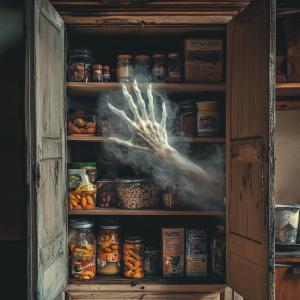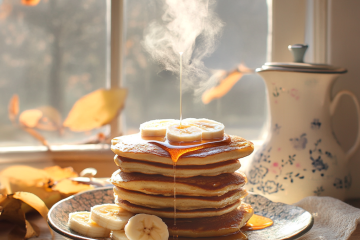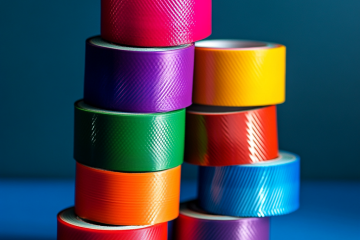
What are the pantry variables that affect the shelf stability of your pantry?
How long can I store flour? What’s the shelf-life of freeze-dried strawberries? Can I preserve meat in some way other than smoking or drying it?
I’d have to say the most common question I get asked as the Preparedness Pro is asking me how long something will store of what the shelf-life is of a particular product. I feel kind of badly for these persons because I know that the answer I give them isn’t the response that they are expecting to receive. The truth is there isn’t a hard and fast answer to such a question because it’s not all about the product you’re storing that is the key factor in the shelf-life, rather it’s the conditions in which you’re storing it. Mind you, this is a controversial position; there are plenty of internet results that will provide you with hypothetical shelf-life statistics, but I’m repeatedly finding them to be far too conservative to what I’ve experienced first-hand. If you know how to protect your supplies from the Pantry Villains, then you can extend the life of everything, including medicines, successfully which will save you a LOT of money, time, and stress.
Before I get to the list of Pantry Villains though, I need to make a clarification. I do not advocate “food storage”. I do not purchase foods for the purpose of putting it away in a corner and forgetting about it. With the exception of the MREs that we have, I USE what I purchase and I only purchase that which I USE.
Pantry Villain #1:
Deception
First of all, please keep in mind that expiration dates or “use by” dates on your food means nothing relevant to how long it can hang out in your pantry before you get around to using it. There are no “expiration posting requirements” issued by the USDA. Such dates are created by the manufacturers (and their attorneys) for multiple reasons, none of which have to do with food poisoning or some other disaster prevention. All those dates really do for me is give me an idea of which items are the freshest when I’m purchasing them.
There’s also another deception in the form of the packaging or staging of the food. Just because the food is packaged a certain way doesn’t meant that that’s the best way for the longest shelf-life. It also doesn’t mean that it’s packaged to ensure the longest shelf-life. For example, I’m always asked if the “cheese wax” on the Tillamook cheese can replace the efforts of waxing ones own hard cheeses. The answer is no, it’s not cheese wax, it’s simply marketing. Besides, in the interest of being self-reliant, do you really want to rely on the manufacturers—whose utmost motive is to get you to buy more product—to properly package your food for optimal shelf-life? Uh, that would be a no, I hope.
Pantry Villian #2:
Oxygen
Once oils in foods are exposed to oxygen, and exchange commences which causes the oils to turn rancid and begin to smell foul. Consuming such rancid fats are actually the #1 cause of heart disease. Oxygen also compromises the texture and nutrients of your food products. A mistake that many people make when preserving their food is their trust in plastic. Plastic does not prevent an oxygen exchange. In fact, items such as whole grains, legumes, or seeds that still need to breathe so that they can remain “living” should be stored in plastic so that they aren’t deprived completely of oxygen.
This principle is one of the reasons why I personally don’t have a lot of flour in my supplies, because it loses so much of its nutrients so quickly. Instead I store the whole grains and a couple of great grinders to ensure that I have the maximum amount of nutrients.
Mylar bags are a good option to inhibit oxygen exchange. How thick should Mylar bags be for optimal shelf-life? If you’re going to bother with the bag, then go with the 5 mil thick ones. They will also help you with most of the other Pantry Villains.
Glass or metal does a great job of eliminating oxygen exchange. My weapon of choice is my FoodSaver for dry ingredients, canning, or #10 cans with oxygen absorbers. (Be sure you’re purchasing your oxygen absorbers from a reputable company to ensure that your OAs are still effective. You can also use the hand warmers as OAs. They are the exact same thing as an OA. One hand warmer would be sufficient for a 5 gallon container.)
Pantry Villain #3:
Heat
The smallest amount of heat can make all the difference in the world in terms of your shelf-life and more importantly, the nutrient value of your food. Before air conditioning, refrigerators, and ice, most homesteads utilized a root cellar to prolong the life of their foods. At five feet below ground, a root cellar will always maintain 50-55 º degrees Fahrenheit. (Root cellars do not protect against humidity though) I suggest that you keep your heat-sensitive supplies below 70º degrees Fahrenheit. This can be accomplished in a basement, cellar, or crawl space area. For those of you who do not have the luxury of such space, make use of space under the beds or back of the closets. You’ll find it to be cooler there than the rest of your home. In fact, a research project conducted in 2006 by the FDA at the direction of the Department of Defense concluded that even medicines enjoyed extended shelf-life an average of 66 months beyond the posted expiration dates simply by avoiding heat exposure of temperatures above 68 º degrees, as well as the other Pantry Villains.
Pantry Villain #4:
Light
The other day I was watching a new episode of Doomsday Preppers. My jaw dropped as I saw several 2 gallon jars filled with rice sitting on the window sill in their food storage room. Good grief! It may still cook up and look like white rice (though the gluten content will most certainly be affected), such light exposure is sure to impact the flavor which is predicated, in part, upon the nutrients in the food.
Exposure to both natural and artificial light causes photodegredation in your food and drinks, which is what happens when food absorbs the light, causing a chemical reaction in the inherent constituents in the food. This sets off a ripple effect in the food as one compromised constituent results in other constituents to follow suit. Photodegredation affects the color, nutrients, fat taste/texture, as well as protein taste/texture. Liquids are most sensitive to prolonged light exposure. The good news though is that packaging foods even in opaque containers offers a significant level of protection from light damage.
Pantry Villain #5:
Humidity
Ideal conditions for maximum shelf-life require your supplies to get stored at 25% humidity or less, unless you’re stocking up on waxed cheeses.
A reduction in humidity in your pantry can make a big difference in the effective temperature of your pantry, so if you are struggling between the challenge of heat vs. humidity, you’ll want to prioritize the lowering of the humidity levels.
You’ll notice that once you open a can of freeze-dried fruit or vegetables, moisture from the air will make the product a bit more sticky. Be sure that you continue to store it in a dry environment even after you’ve opened it and you should be able to still enjoy the taste, texture and nutrition of the product for the next 18 months as you continue to use it.
Adding a bit of white rice to your #10 cans after you’ve opened them will help to absorb the unwanted moisture. You may also want to use the rice in your spices as well in order to extend their quality taste. (Spices don’t really go bad, they just lose their potency over time)
Technically speaking, freezer-burned food aren’t bad, they are simply demonstrating a loss of moisture. Such foods are still perfectly safe to consume; the lack of moisture simply depletes quality in taste and texture. Again, there’s nothing wrong with freezer-burned food, it’s just not as beautiful in appearance and lacking in taste. BUT…the good news is that you can re-hydrate such foods with a pressure cooker, and have it turn out just fine.
Root vegetables actually NEED humidity and thrive in conditions of 50-75% humidity. You can extend their shelf-life if you bury them in wet sand AND store them vertically in that sand. You’ll have to “water” the sand from time to time as the water will dissipate. They will be perfectly happy in a root cellar, however, due to the inherent humidity conditions, dry items should not be stored in the root cellar.
Now, before you get concerned that your home is too hot, you don’t have a basement, or you’re making any other “food storage sin”, let me be the bearer of some good news. You CAN submit to any one of these Pantry Villains and still be able to rely on your food being edible BUT…the period of time in which you expose your food and drink to these Villains will have a direct impact on just how long you have before you need to use your supplies will be tasteless (or off-tasting), colorless, and nothing but empty calories. I’d like to believe that we’re all investing in hearty food supplies so that we THRIVE instead of just survive, so do all that you can to ensure you protect it all from these dastardly villains. *grin*
One final thought on the matter. If I sold you something that you knew would increase in value quickly by a minimum of 400%, you’d be very motivated to protect that purchase, right? Well, the fact is that the VALUE of food and drink today is escalating and by my most recent calculations, most of the food that I’ve invested in over the years has increased in value by at lest 400%! I can assure you there’s not one item I’ve allowed to LOSE value, because I rotate it. On top of that nice little benefit, it’s also essential. It can be the difference between life and death, health or disease. As such, my position is that if we’re going to invest in it, then we need to be willing to prioritize and apply our other resources to ensure that we don’t lose any of that value—and ensure that it’s there when we need it.


